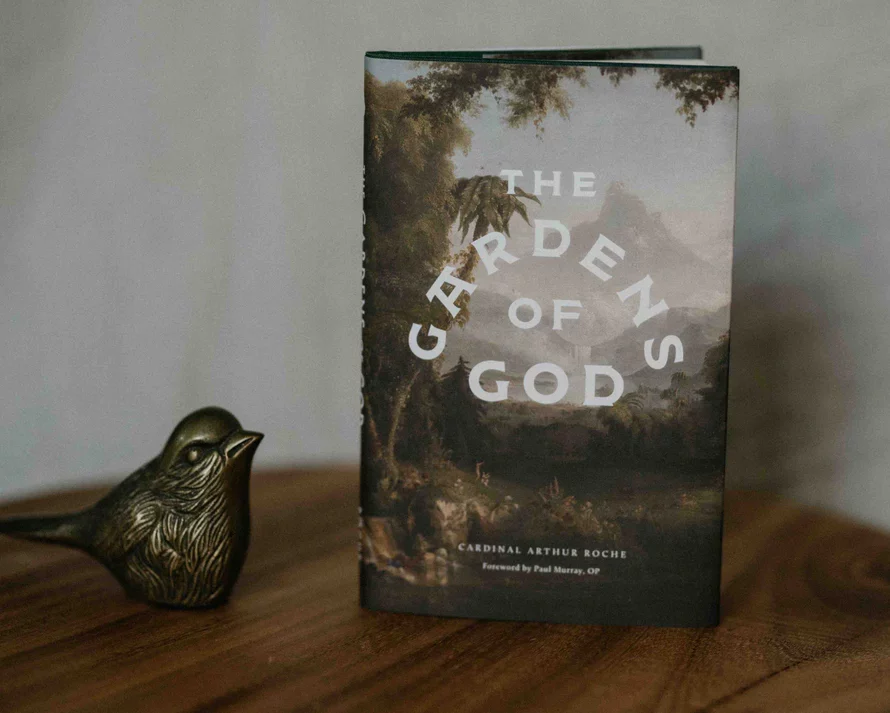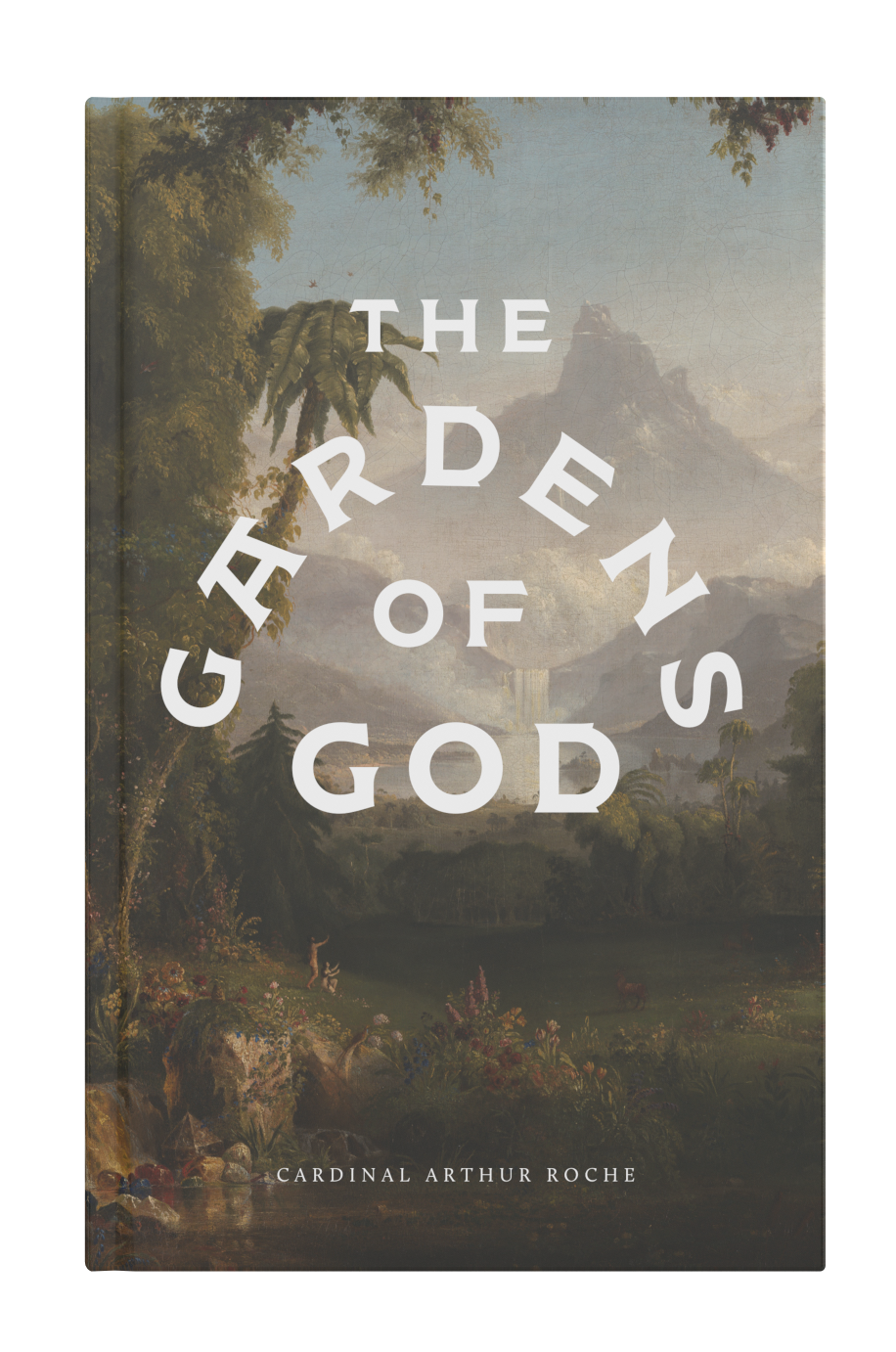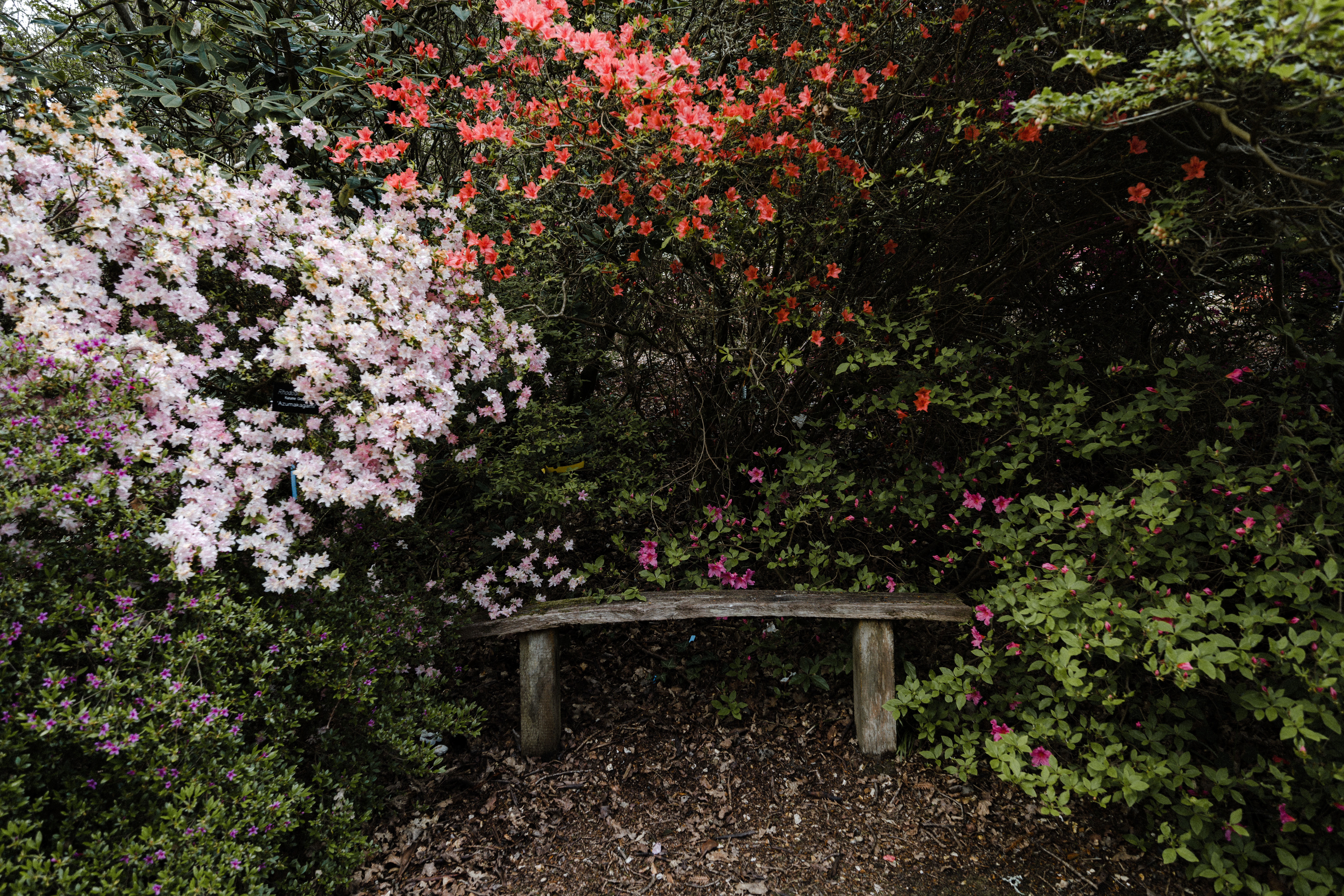
The following piece is an excerpt from The Gardens of God by Cardinal Arthur Roche (Word on Fire Publishing), highlighting a section from pp. 1-7.
A story is told about a Desert Father who one day visited his neighbour to ask: “What is spiritual fatherhood?” The other thought for a while and then said: “One beggar telling another beggar where to get bread!”
The crumbs that are found in these pages have fallen from some of the bread which has been given to me to eat and which I have chewed upon at different moments and which has nourished me. In sharing them with you I act simply as a weather-beaten signpost whose only wish is to point to where the bread shop is!
These thoughts were prepared at different times for different audiences, but as I have been asked now to offer them to a wider readership, I do so aware that if these thoughts contain for others anything of genuine worth, then that is due to the inspiration of the Holy Spirit at work. Setting aside time each day for prayer and recollection allows us the opportunity to face God and to face ourselves in the light of God’s presence. As we do this, it seems to me to be important that we should really try to face God rather than succumb to self-reflection. In reality, it is more important to think “Whose am I?” than “Who am I?” Before there can be a nominative, there has to be a genitive. Through creation, but particularly through Baptism, we belong to the Lord.
The answer to the question “Whose are we?” in fact, is not simply found within our own self-consciousness. We are not solely our own mystery; we are much bigger than that! We belong to God who is beyond our measure and in whose image we are made. But part of the answer also lies with those to whom we have been sent to serve as ministers of his Good News.
It is clear that a bishop’s identity is most evident when he stands at the altar with his priests and people gathered around him. There his priesthood is clearly seen as he intercedes for the Church and the entire world as he re-enacts the sacrifice of Calvary. In the Roman Canon, we learn that the bishop is one who, “holding to the truth, hands on the catholic and apostolic faith.” This English translation, however, doesn’t capture the entire meaning of the Latin text. Orthodoxis atque catholicae et apostolicae is a description of bishops, who are defined as fidei cultoribus, the ones who cultivate and hand on the Catholic and Apostolic faith.
The word cultor comes from the Latin verb colo, colere, which means ‘to cultivate’. A cultor fidei is someone who cultivates faith like a gardener cultivates the land. He is someone who plants a tree in the soil that reaches to the heavens! The word ‘column’, interestingly, has the same derivation. Classical architecture makes it easy for us to recognise trees in the magnificent columns of Greece and Rome where we see before our eyes stone trunks of trees whose capitals bear the semblance of branches and foliage.
There are in particular four gardens which play an important part in God’s own drama from Genesis to the Apocalypse.
The cultor is someone who plants and harvests, who works and cares for the crops, the vines, who keeps bees and tends the beasts. These are all the original Latin usages. So, from within the context of the Eucharistic Prayer, we can say that bishops and priests are gardeners and farmers, as well as shepherds! They have to work at ground level, in the dust, among the weeds in God’s field. The cultor belongs to the land, which is one of the reasons why bishops have a specific territory in their titles. It is there, in his territory, that he plants and cultivates and brings in the harvest. He is someone who supports and fosters, who teaches and guides and guards against fraudulency.
In Latin there is another verb, colo, colare – in contrast to colo, colere – which is not of the same root. This verb speaks, however, of someone who adores and reverences God, who is devoted to God and zealous in his faith. In this ancient Roman sense, he is a priest of the deity he serves. And as a priest he is the one who gives right faith to God, which is the meaning of orthodoxus.
What, after all, is Apollos? And what is Paul? Only servants, through whom you came to believe – as the Lord has assigned to each his task. I planted the seed, Apollos watered it, but God has been making it grow. So neither the one who plants nor the one who waters is anything, but only God, who makes things grow. The one who plants and the one who waters have one purpose, and they will each be rewarded according to their own labour. For we are co-workers in God’s service; you are God’s field, God’s building. (1 Cor 3:5–9)
The image of the gardener or the cultivator is one that in the Scriptures is originally reserved to God – “for there was no man to work the ground”, as we hear in the book of Genesis (Gen 2:5). The very first example of God’s cultivation of the land is when he breathes on the soil, blowing his spirit into the dust of the earth and forming the first man, Adam, who, with Eve, was the summit of his creation. Following on from this, God establishes and cultivates a garden – “the Lord God planted a garden in Eden, in the east” (Gen 2:8). St Basil the Great tells us that this is the reason why there was a tradition of praying towards the east, expressing a longing to return to our homeland, to paradise.
Out of the ground the Lord God made grow every
tree that is pleasant to the sight and is good for food,
the tree of life also in the midst of the garden, and
the tree of the knowledge of good and evil. (Gen 2:9)
After establishing this fertile patch, God then places man into this garden, handing over to him the responsibility to cultivate it further – “to till it and keep it” (Gen 2:15). St Ephrem the Syrian and St Augustine of Hippo explain that Eden, of course, is the land of paradise that God made after he created man. It is also a symbol of the Church that needs tending and into which he places the human race.
Against the immense and unfolding drama of creation in chapter 1 of Genesis – so beautifully de- picted in the Sistine Chapel – and against the broad brushstrokes of bringing into being light and darkness, the swirling waters and the appearance of land, we suddenly find ourselves, in the second and third chapters, in a beautiful garden of tranquillity, which even God enjoys as he walks through it in the evening, savouring its delights. Of course, it did not last very long! The sin of our first parents brought this idyllic moment to an end. Nevertheless, what is interesting here, St Ephrem in his commentary tells us, is that the reason why God’s footsteps could be heard was in order to help our first parents – as it were, to give them a chance to make supplication to God. Instead, they hid. St John Chrysostom, however, says that the sound of God walking was to induce a fear in them for what they had done. These two opinions perhaps highlight well the difference between a deacon and a bishop! Ephrem says that had they sought to repent at this moment, even though not regaining what they had lost through their sinfulness, God’s heart would have softened and they would have escaped the curses decreed upon them and the earth.
Gardens are important. The places where we plant and gather the harvest speak to us of life and livelihood. There are quite a number of gardens specifically mentioned in the Bible. Among them, the Garden of Eden, of course, which later the prophet Ezekiel calls ‘God’s garden’ (Ezek 28:13, 31:8–9) and Isaiah the ‘Garden of the Lord’ (Isa 51:3); the vineyard of Naboth that Ahab wanted to change into a vegetable garden for his own use (1 Kgs 21); the enclosed garden where Susanna bathed and was maliciously accused by lecherous old men (Dan 13); the locked garden in the Song of Songs which is likened to the Bride (Sg 4:12); and the many allegorical sketches that we find in the prophets, not least in Isaiah and Jeremiah.
But there are in particular four gardens which play an important part in God’s own drama from Genesis to the Apocalypse. First, the Garden of Eden – ‘God’s garden’ – which became the garden of sin. Second, the Garden of Gethsemane (Mt 26:36, Mk 14:32), literally meaning ‘oil press’ and well known as a place of prayer, which became the garden of suffering. Then, third, the Garden of the Tomb (Jn 19:41), which became the garden of victory. We should not overlook the fact that it was a new tomb, a virgin tomb, which symbolises for the Fathers of the Church a womb from which a new birth took place. The cultivation of this garden, through Baptism, is made very clear in the Third Eucharistic Prayer where, praying for the dead, we say, “Who was united [complantatus fuit] with your Son in a death like his, may also be one with him in his Resurrection.” But the phrase complantatus fuit (keeping Romans 6:5 in mind), actually means that in Baptism, which is derived from the verb “to plunge”, we are planted in the same furrow of the earth, as it were, in which Christ was planted in death in order to rise with him to life. And finally, there is the Garden of Paradise, the garden of eternal life, the garden where the new tree of life, the cross, bears the fruit which is Christ’s Body. This garden is where the complete gathering of the Church takes place even now as well as at the end of time.
The specific character of these gardens is to be found in each diocese and in each community. Indeed, they are to be found in the gardens of every soul.

You can learn more and order your own copy of The Gardens of God by Cardinal Arthur Roche (Word on Fire Publishing) now in the Word on Fire Bookstore.
